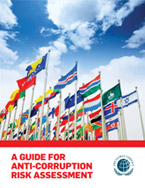 United Nations Global Compact Office
United Nations Global Compact Office
Sinopse: The promulgation of regulatory guidance on the importance of an effective anti-corruption compliance programme has been steady and significant over the last few years, and has garnered media attention given the size of the fines some enterprises have paid. That media attention has, in turn, led to increased focus from management, board members and investors alike on corruption-related risk’s impact on stock value, company reputation, employee morale, and the people of the impacted countries. Effective assessment and mitigation of an enterprise’s corruption risk has been an element of many recent settlements with regulatory agencies. It is highlighted in both the OECD’s Good Practice Guidance on Internal Controls, Ethics and Compliance, and the Guidance issued to accompany the UK Bribery Act. It is also a critical element of the UN Convention against Corruption, including the 10th Principle of the UN Global Compact.
The need for risk assessment and the approach outlined in this document is consistent with the “assess” step of the UN Global Compact Management Model framework. This step allows an enterprise to identify risks that can affect its performance and reputation from nonalignment with the 10 Principles of the Global Compact.
Increasingly, companies across the world receive more lenient treatment in bribery prosecutions as an affirmative defense for the quality of their anti-corruption programmes in the event of employee misconduct. One key component of an effective programme is the assessment of the anti-corruption risk facing a given enterprise. Though much of the available regulatory guidance is instructive and highlights the importance of effective risk assessment, it fails to provide a “how-to” of such an assessment.
